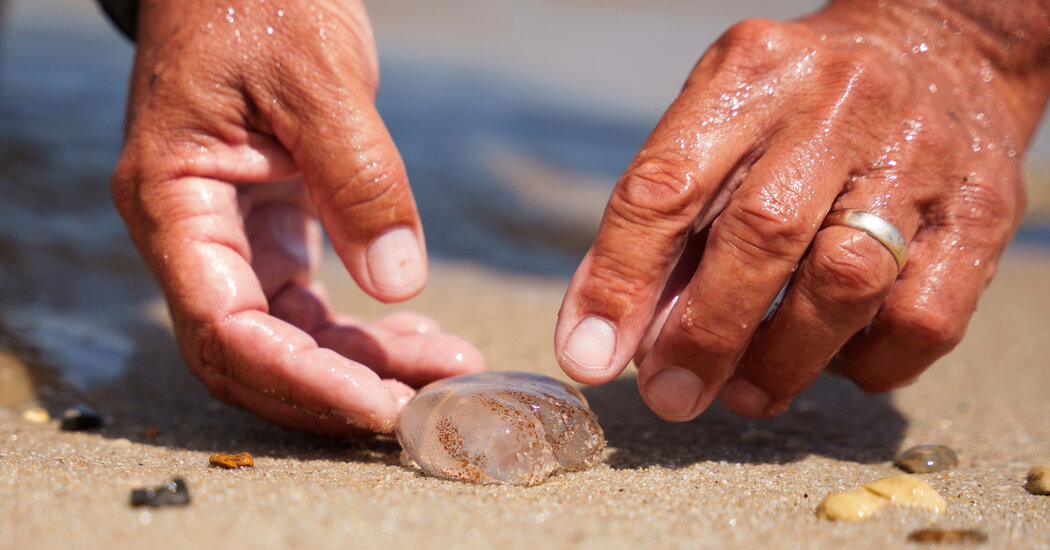No, dear beachgoer, it’s not your imagination. It seems to be a bumper season for brainless, bloodless, boneless and heartless jellies at some East Coast beaches.
There have been reports and warnings all summer of their increased presence at beaches and their stings to beachgoers. Some of the creatures are also behaving unusually, with moon jellyfish — not typically known to sting humans — doing so on Cape Cod in Massachusetts, and a swarm of jellyfish forcing a shutdown of a nuclear power plant in France.
But there’s nothing extraordinary about any of this, scientists say.
There cannot be a jellyfish census, and there isn’t even a consensus on how many species of jellyfish exist, but there are at least 1,000. So it’s impossible to say whether there is a surge in the population of jellyfish, which have survived for over 500 million years.
“I don’t think it’s time to push the panic button yet,” said Chris Doller, an expert at the New England Aquarium in Boston.
A group of researchers looked at several hundred years of historical records, finding that there appeared to be a cyclical pattern in the occurrence of big jellyfish blooms over a period of several decades.
That pattern, overlaid with steadily warming ocean waters in many parts of the world, especially along the coast, may be helping jellyfish expand their range, according to one of those researchers, Larry Madin.
Thank you for your patience while we verify access. If you are in Reader mode please exit and log into your Times account, or subscribe for all of The Times.
Thank you for your patience while we verify access.
Already a subscriber? Log in.
Want all of The Times? Subscribe.
The post It May Feel Like Peak Jellyfish, but Peak Anxiety Can Wait appeared first on New York Times.




